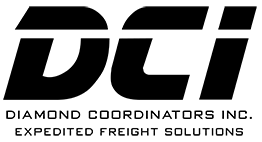Labor shortages, major delays, and unaccounted for setbacks are a major factor of effectively handling supply chain risk management in 2022 and for the foreseeable future.

We’ll go over the different types of supply chain risks that you should be aware of and prepared to handle, or effectively outsource, at a moment’s notice. If your business is looking to outsource its supply chain management, Diamond Freight System Inc. is one viable option for your business needs if you’re looking for a specialized freight and logistics company to handle operations.
Two Types of Supply Chain Risks
There are plenty of different ways that a business can effectively manage risk. Here are some of the different supply chain risks to be aware of:
- Known and Unknown
- External and Internal
Some examples of known supply chain management risks include any of the following:
- Software for Supply Chain Risk Management
- Sales Tracking Software
- Effective Stress Management Company-wide
- Processes Optimization and Efficient Monitoring
Some examples of unknown supply chain management risks included any of the following:
- A rapid adaptation to the market
- Encompassing multiple contingency plans
- Flexible manufacturing and procurement methods
Supply Chain Issues at a Closer Glance
On top of known and unknown supply chain risks, and external and internal supply chain risks, there are also two other issues to consider when handling supply chain risk management, they are:
- External supply chain management risks
- Internal supply chain management risks
Risks associated outside your company’s supply chain are defined as external supply chain risks. When it comes to mitigating external supply chain risks, it’s typically difficult to anticipate them due to a lack of transparency – inevitably, it’s going to require more skill, time, and resources to tackle such problems.
For external supply chain risks, these include:
- Material
- Demand
- Competitors
- Environment
For internal supply chain risks, these include:
- Manufacturing
- Business
- Planning and Control
- Mitigation and Contingency
Effective Ways to Manage Risks
Awareness of any issues in a company’s current supply chain risk management operations is the first step to successfully managing risks in any given environment.
Effectiveness of managing risks can be a tricky subject matter, and there are certainly many ways to measure success of supply chain risk management. Below are four ways to measure success rate:
- Automate where it makes sense to: this can be as simple as utilizing artificial intelligence (A.I.) or machine learning (M.I.) to streamline basic processes such as resupply management, finding substitute supplies, or even predicting equipment maintenance schedules.
- Don’t skimp on top-tier industry talent: as far as the industry is concerned, top-tier talent will always be needed. As long as there is physical transportation of goods and services needed in the world, hiring experienced and reliable workers should be at the forefront of your business’ projections and budget.
- In-depth research on vendors: simply researching and asking other businesses for a reference check to validate a vendor’s reliability and open communication policy, should help in minimizing any headaches encountered down the metaphorical road with any problem vendors your business might have to deal with.
- Discover non-negotiable deal-breakers: whether it’s a vendor or a customer, understanding where your business draws a fine line between respecting itself and putting up with clear abuse of privileges should rarely be up for debate.
Conclusion
As time has shown the freight and logistics industry, effectively taking care of supply chain risk management is one of the core functions of successfully running a business. On the customer end, it may not be possible to handle the full cycle of supply chain risk management.
Whether you are looking for freight reassessment services or a reliable transportation company to handle your cargo needs, we at DFSI are ready to meet your expectations. To get in touch, please visit our Contact Us page. With us, you will always receive timely, high-quality freight consolidation services.
https://www.dhl.com/global-en/delivered/globalization/supply-chain-risks-in-2022.html
https://www.rapid7.com/blog/post/2021/10/22/2022-planning-designing-effective-strategies-to-manage-supply-chain-risk
https://financesonline.com/managing-supply-chain-risks-during-disruption/
https://appinventiv.com/blog/strategies-for-supply-chain-risk-management/
https://www.logility.com/blog/supply-chain-goals-for-2022-what-should-you-prioritize/
